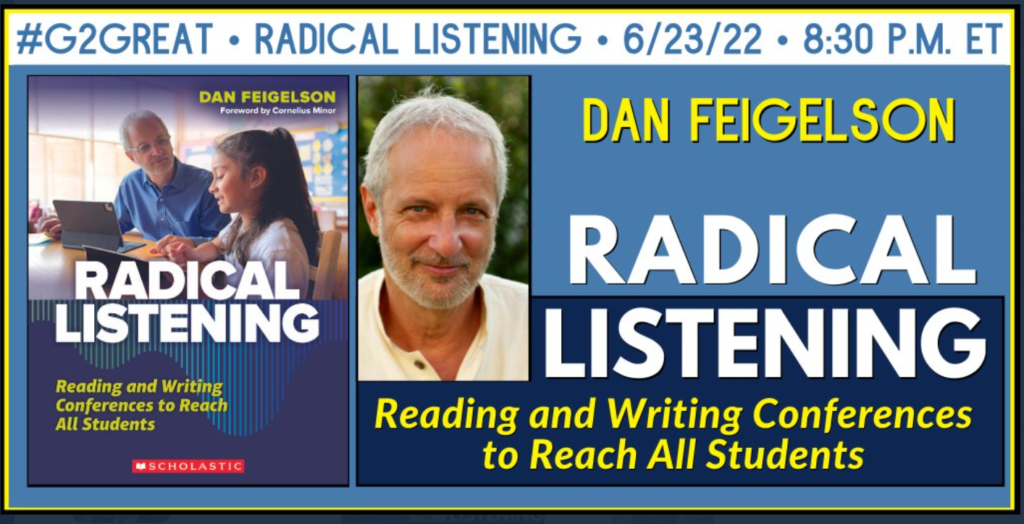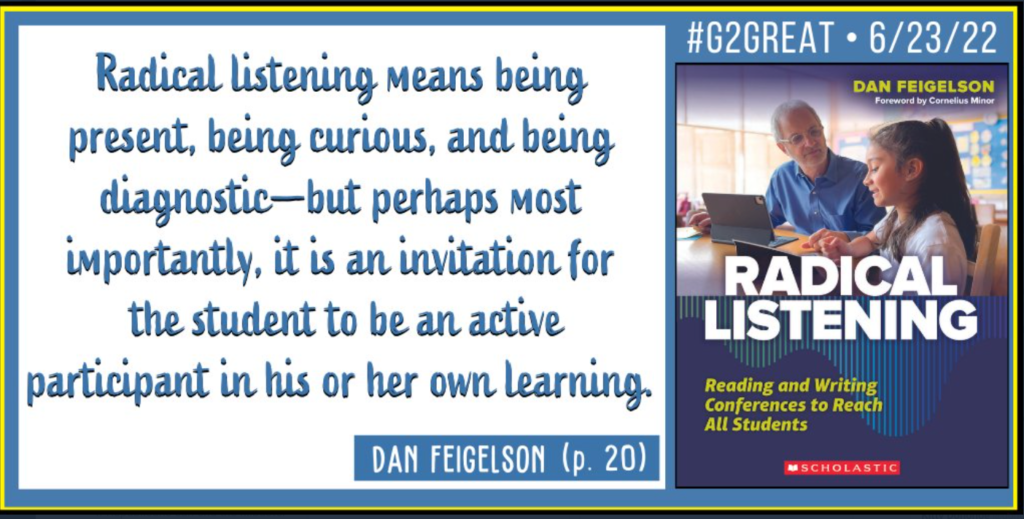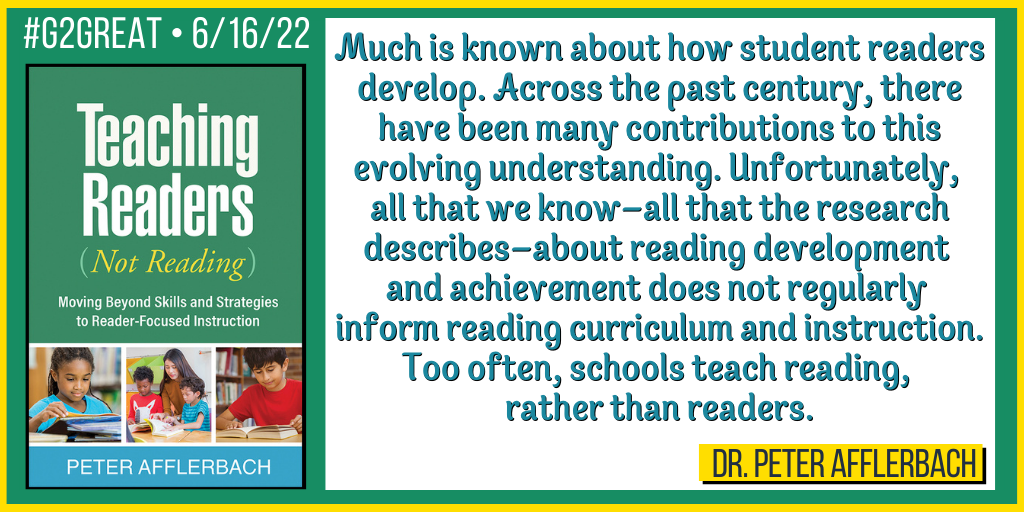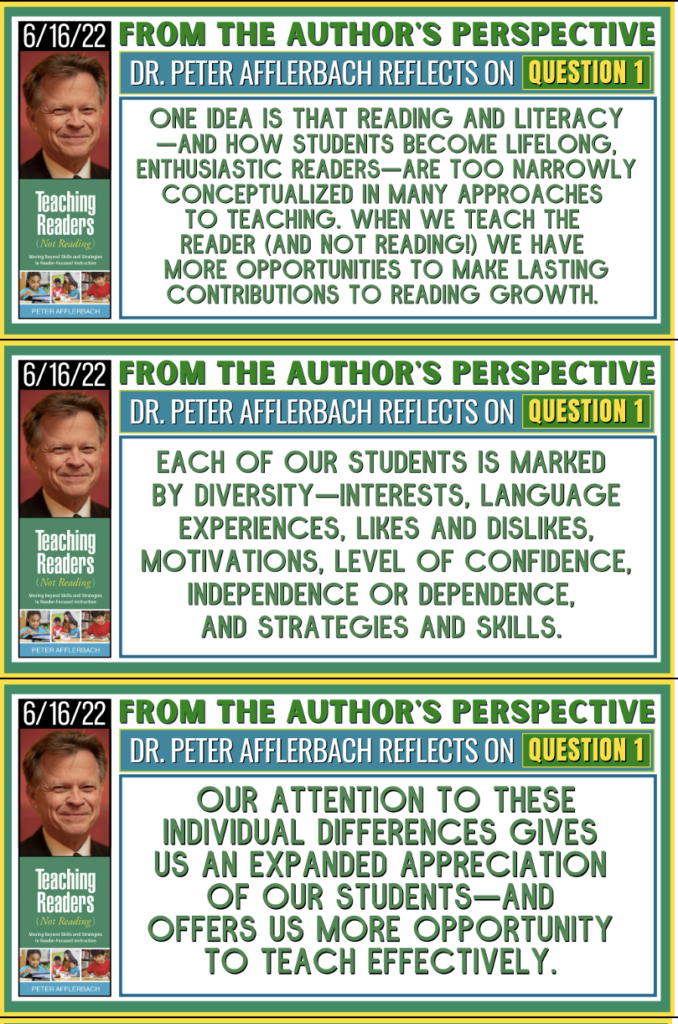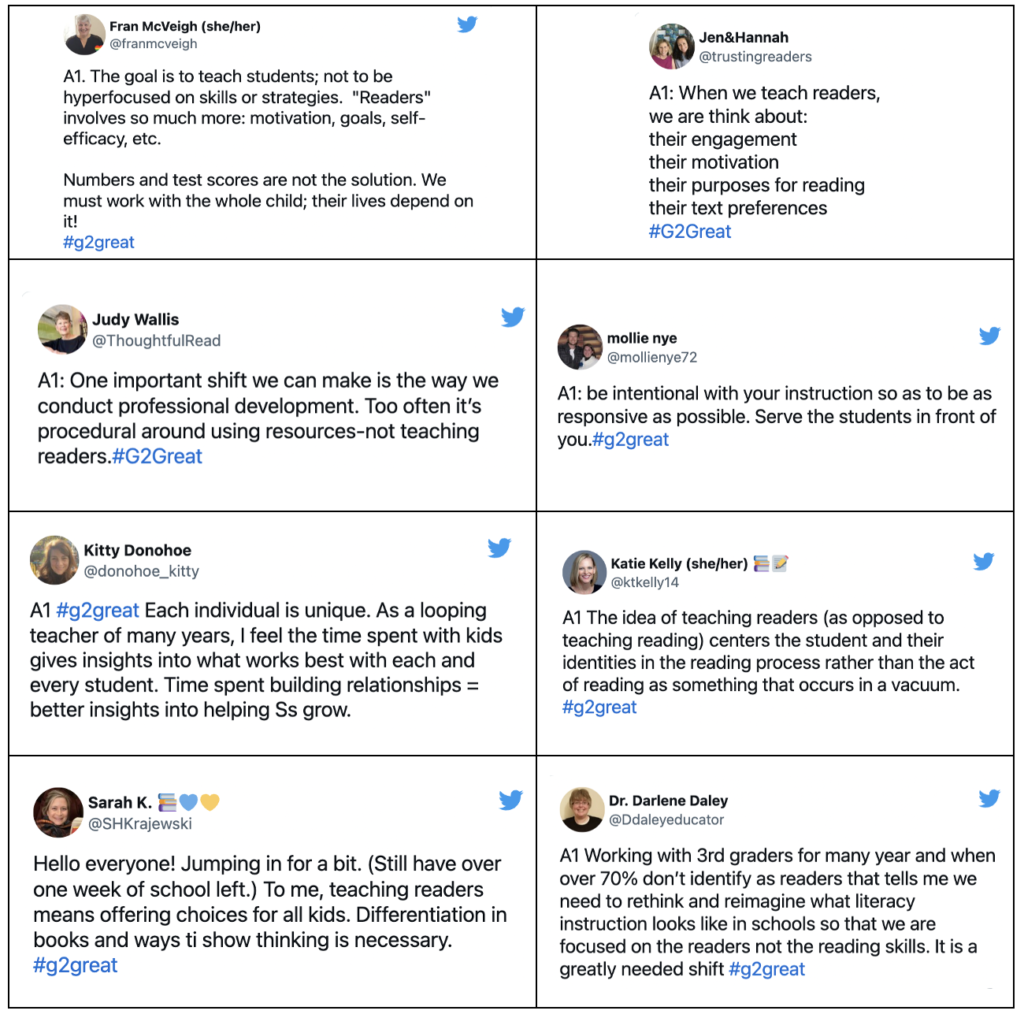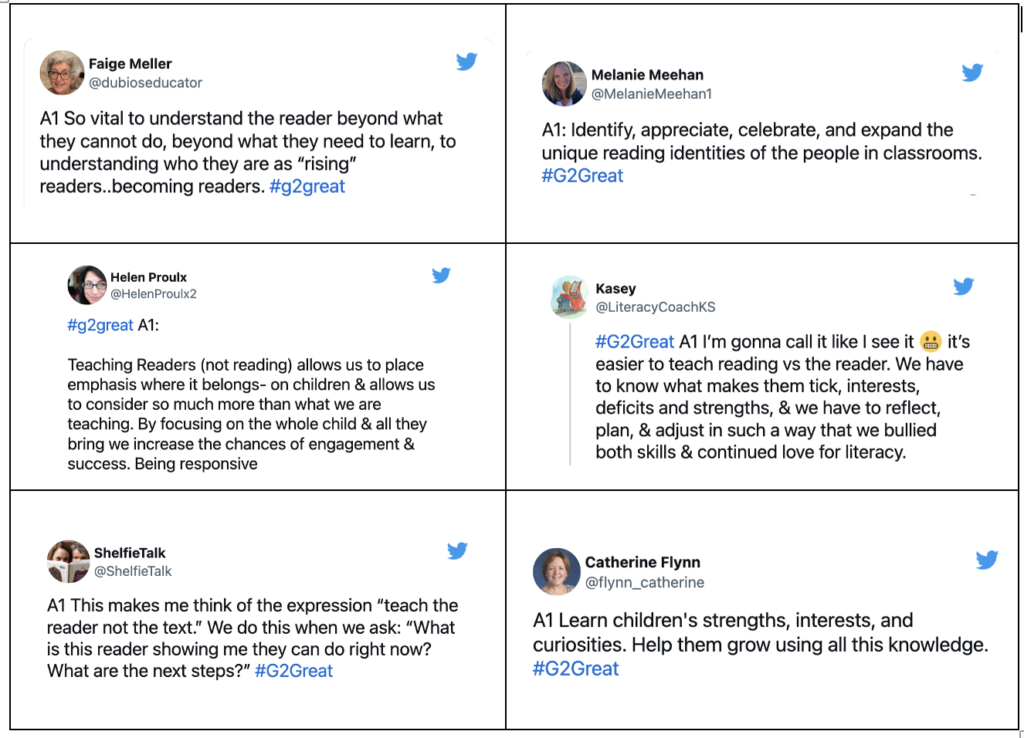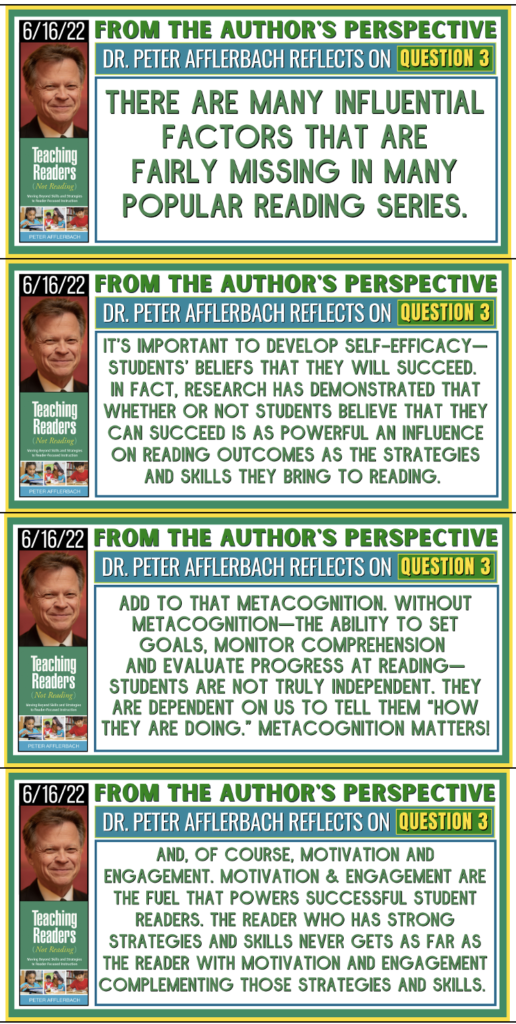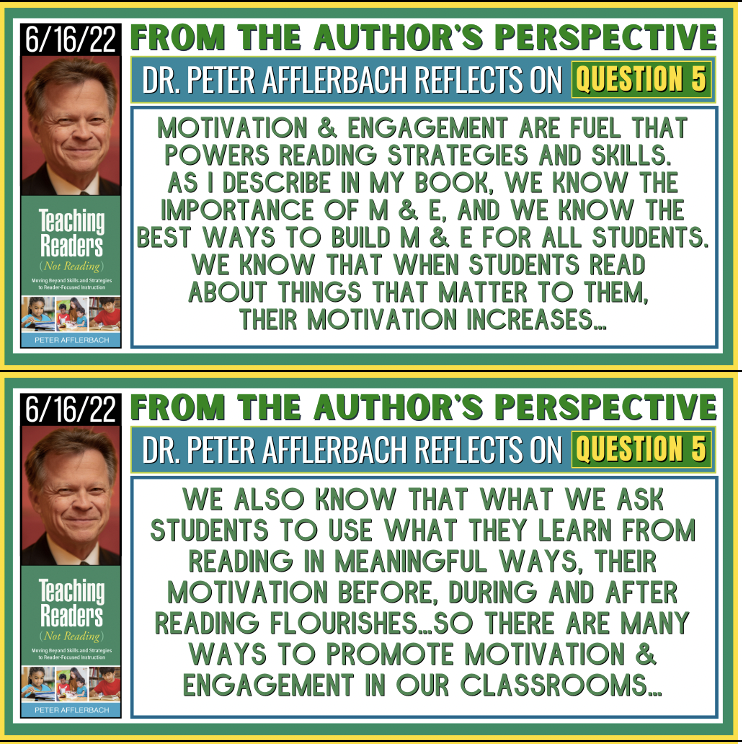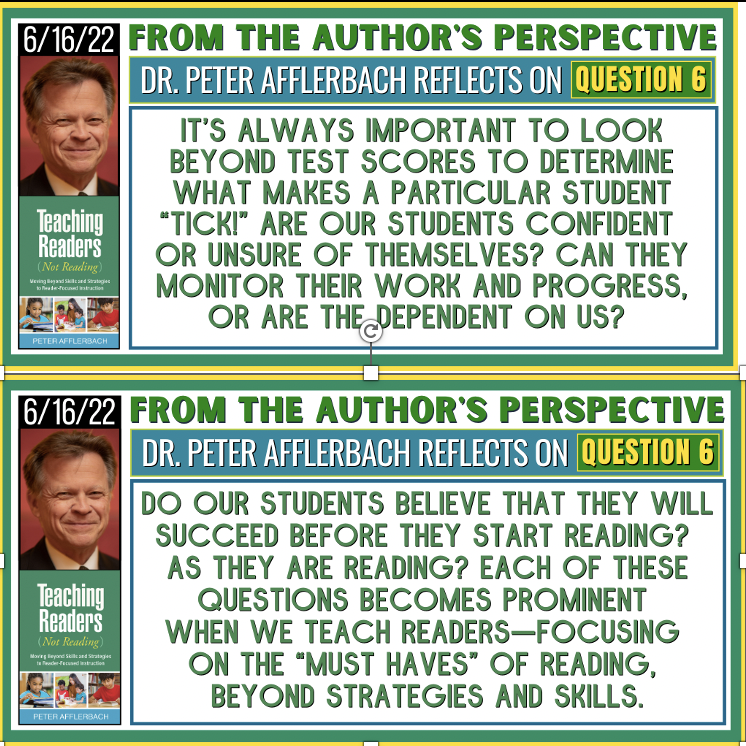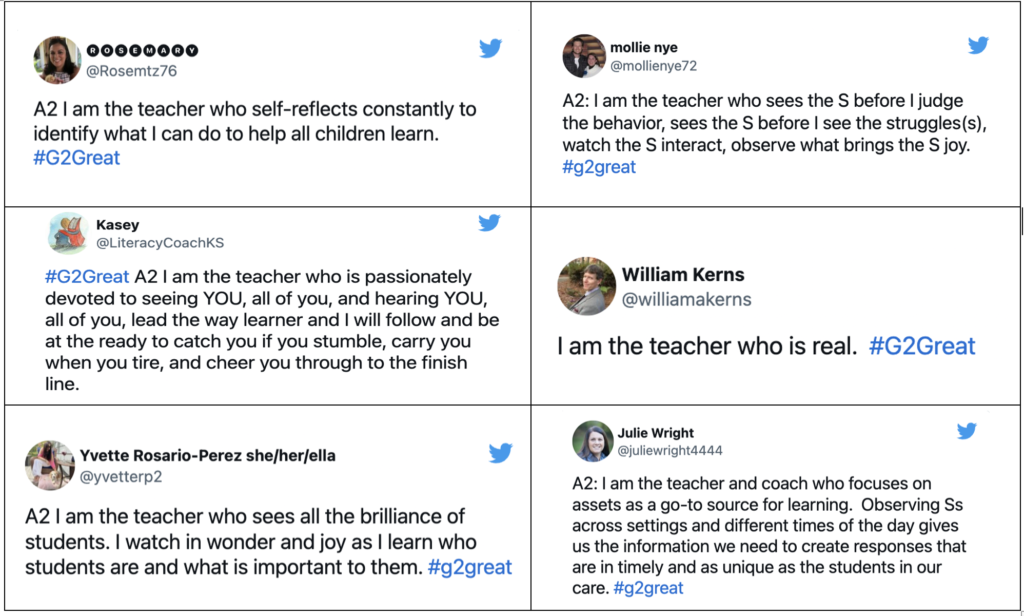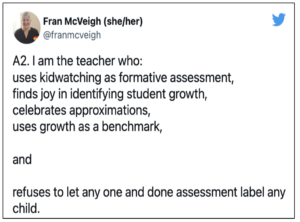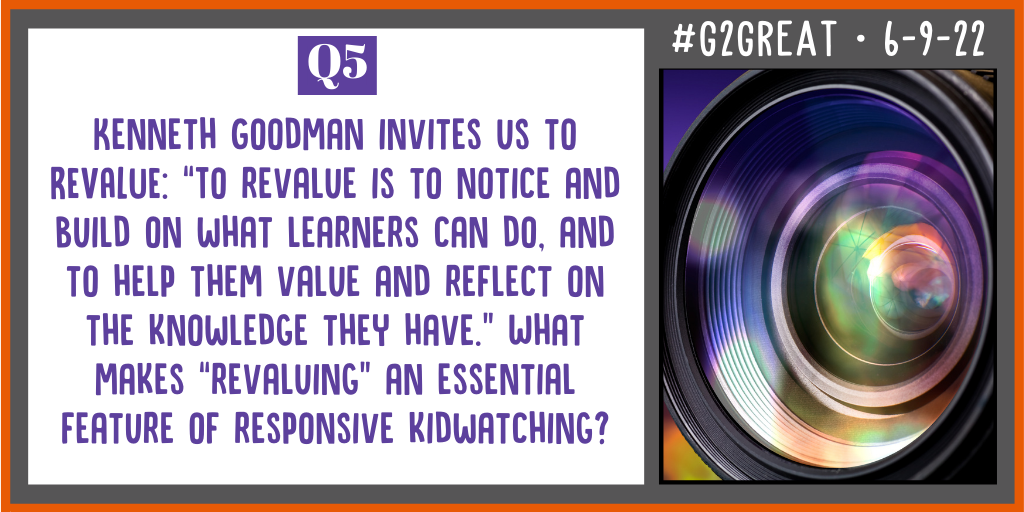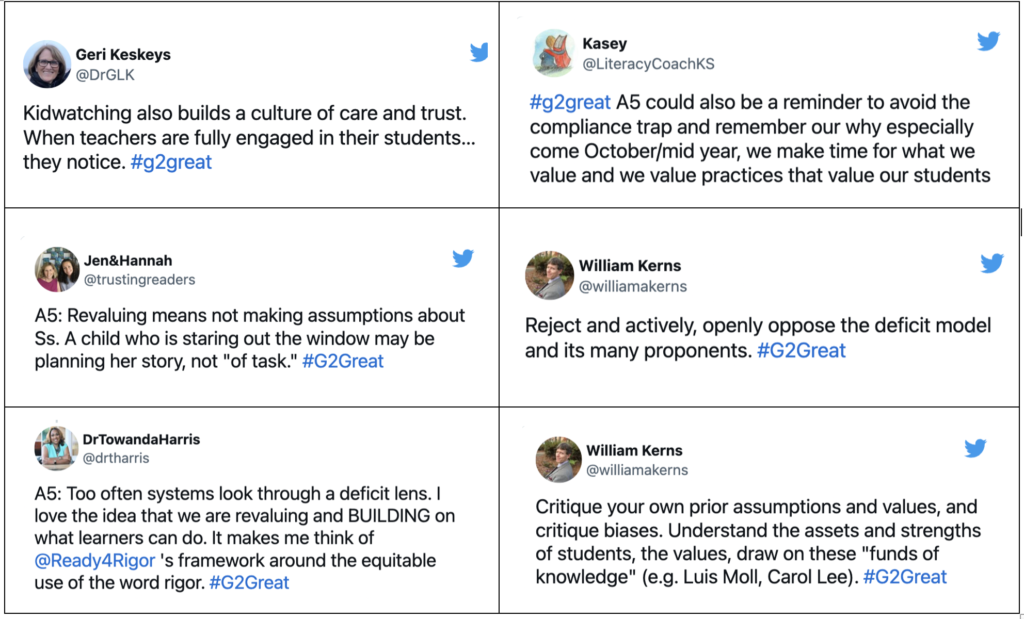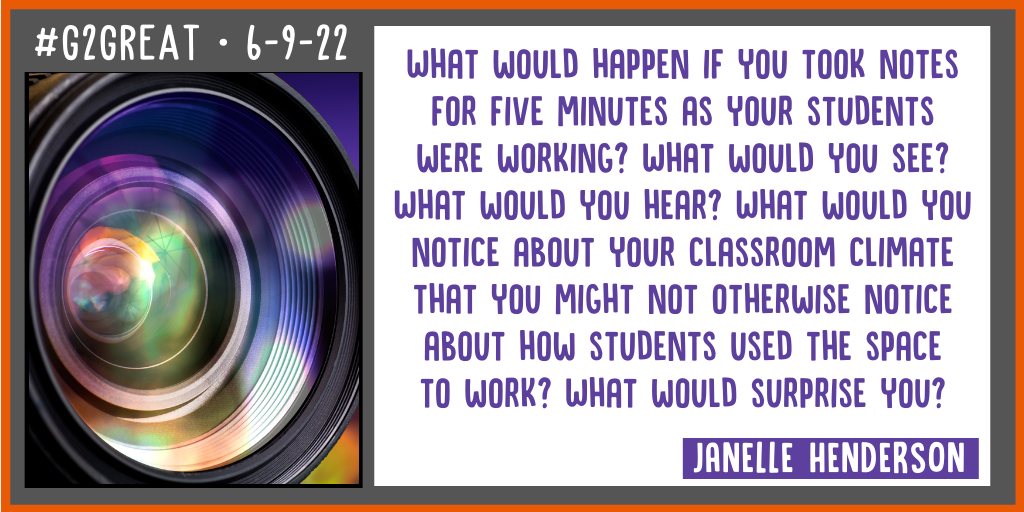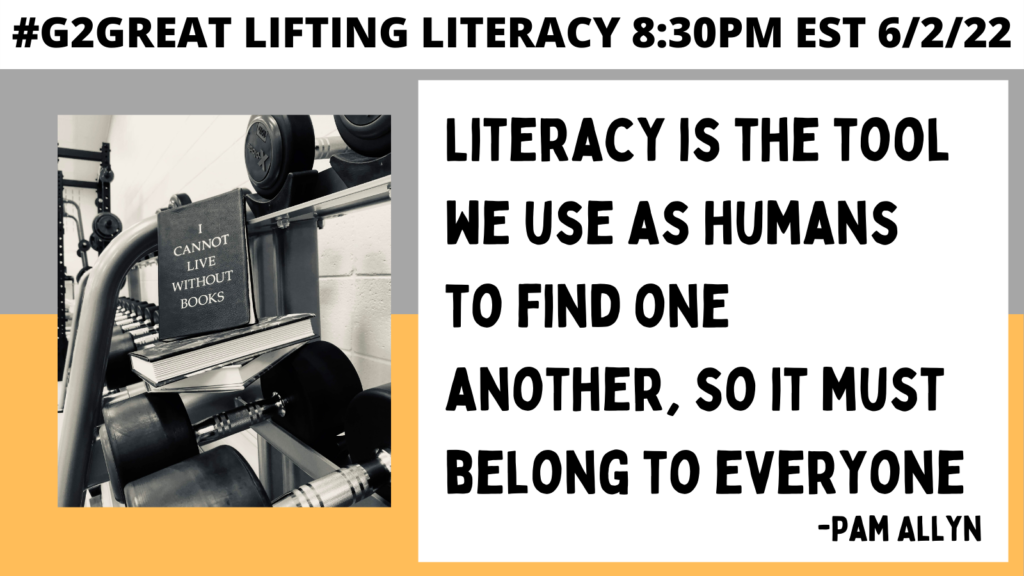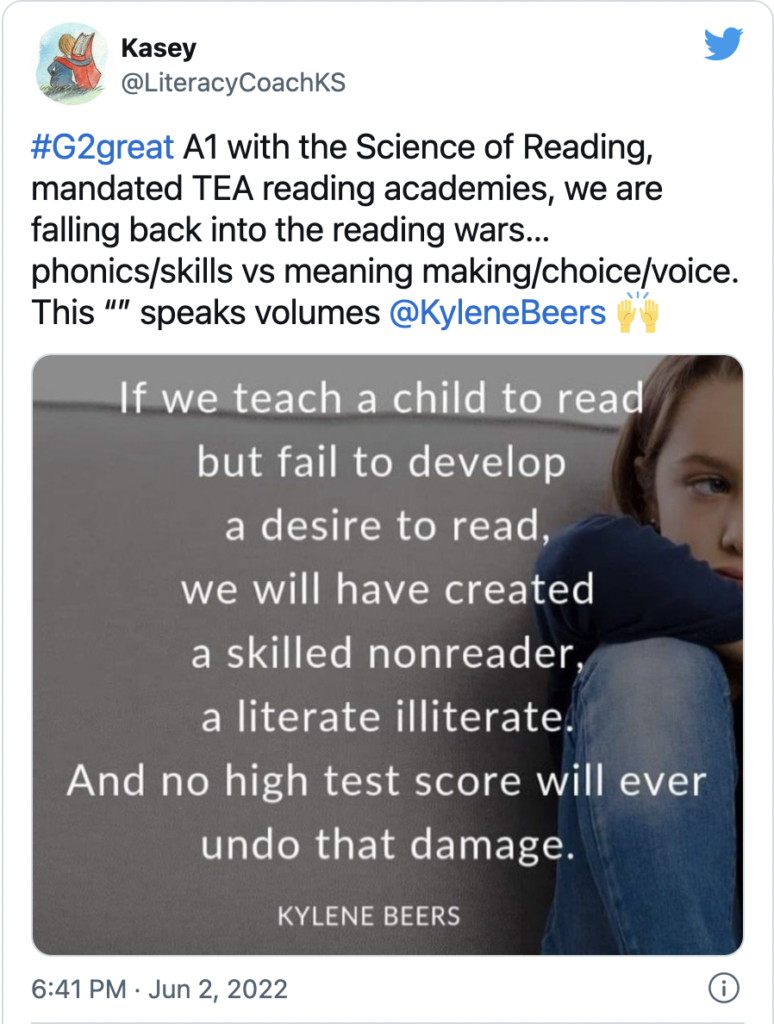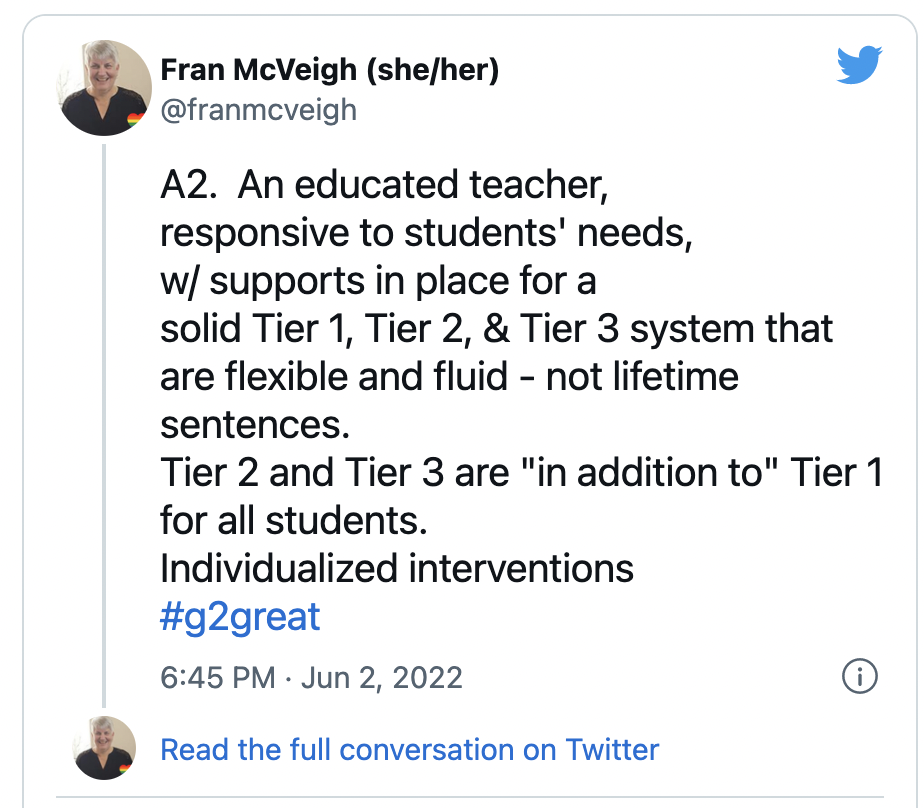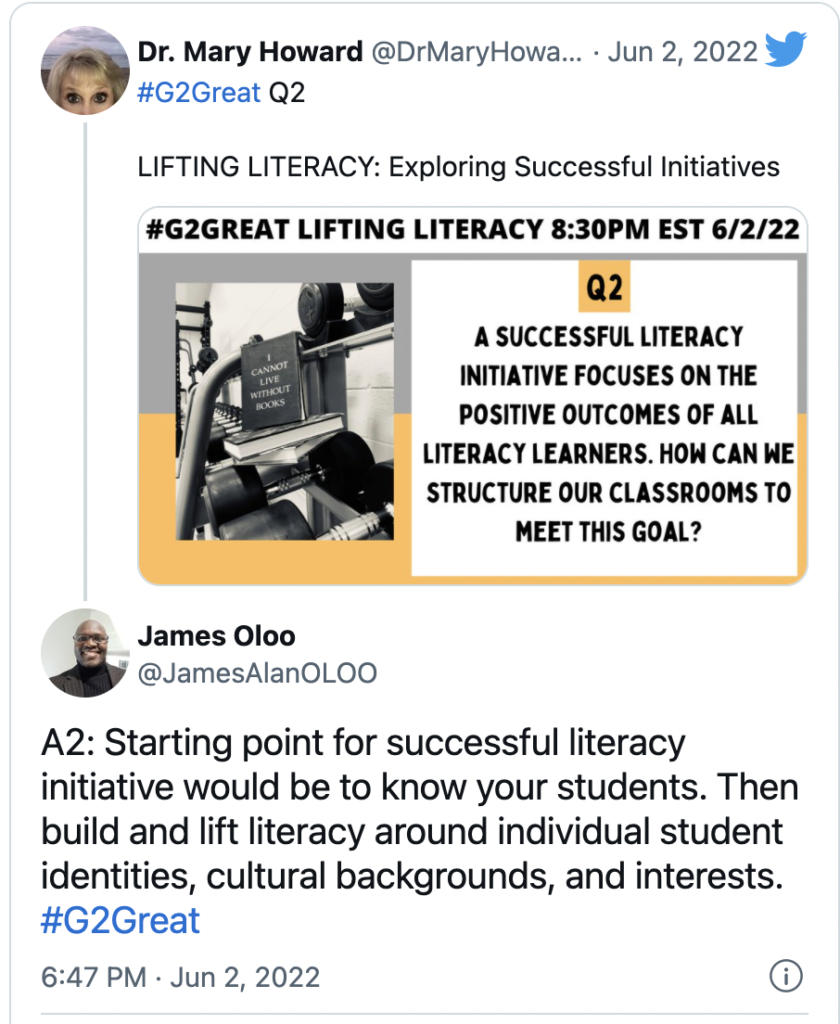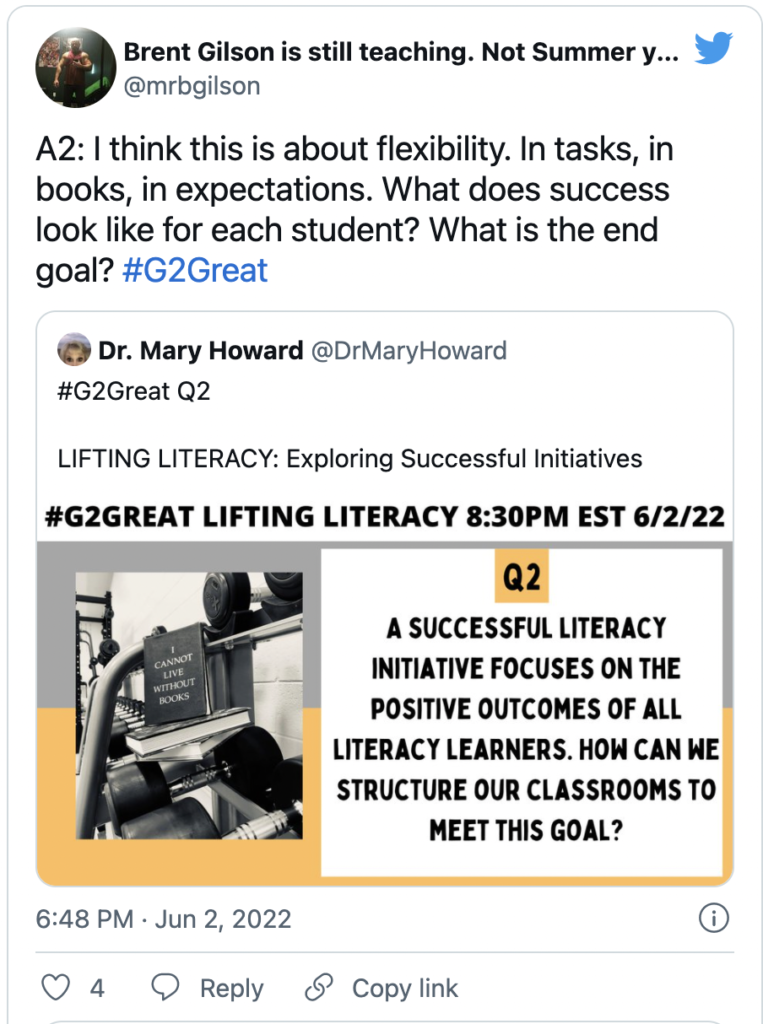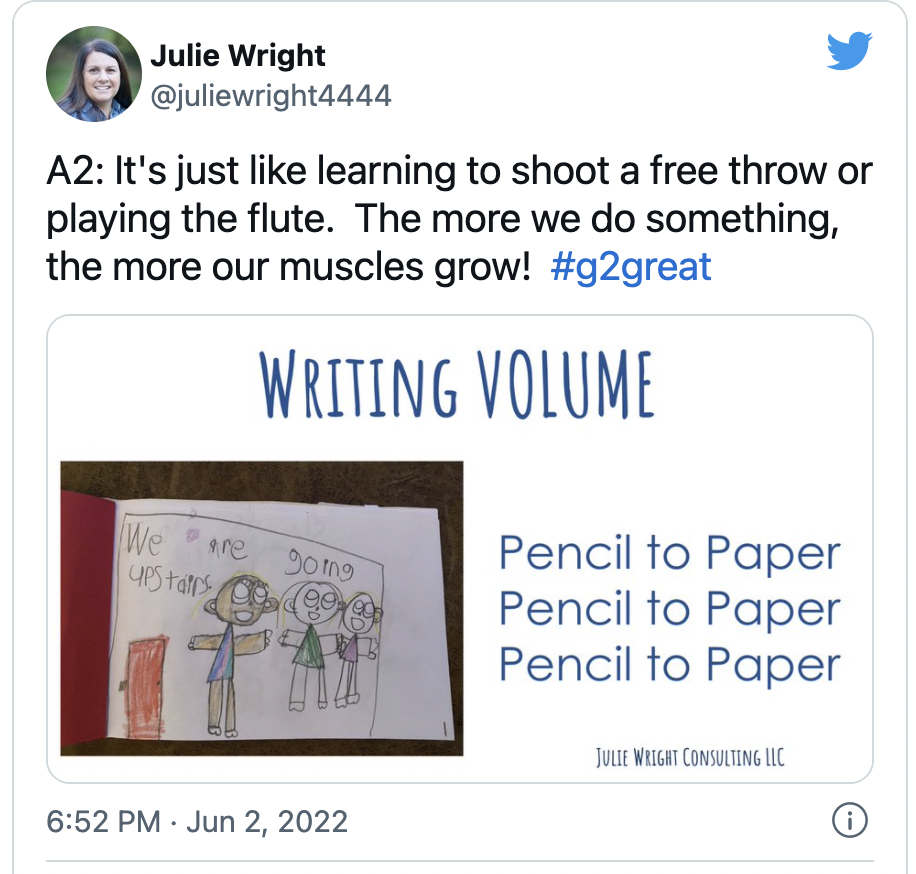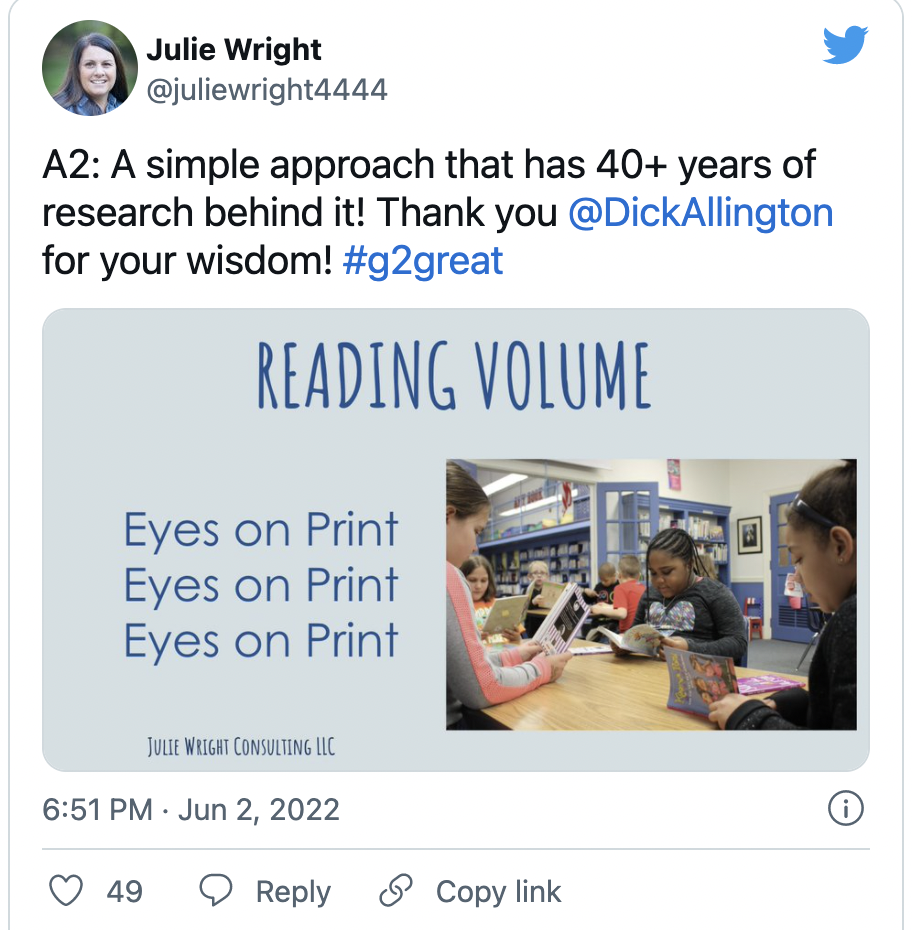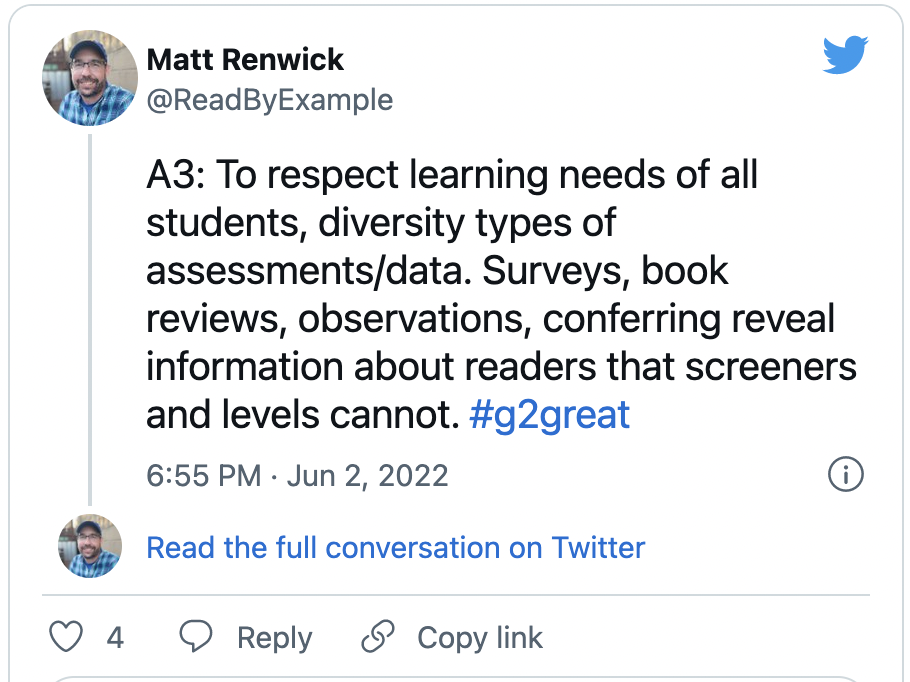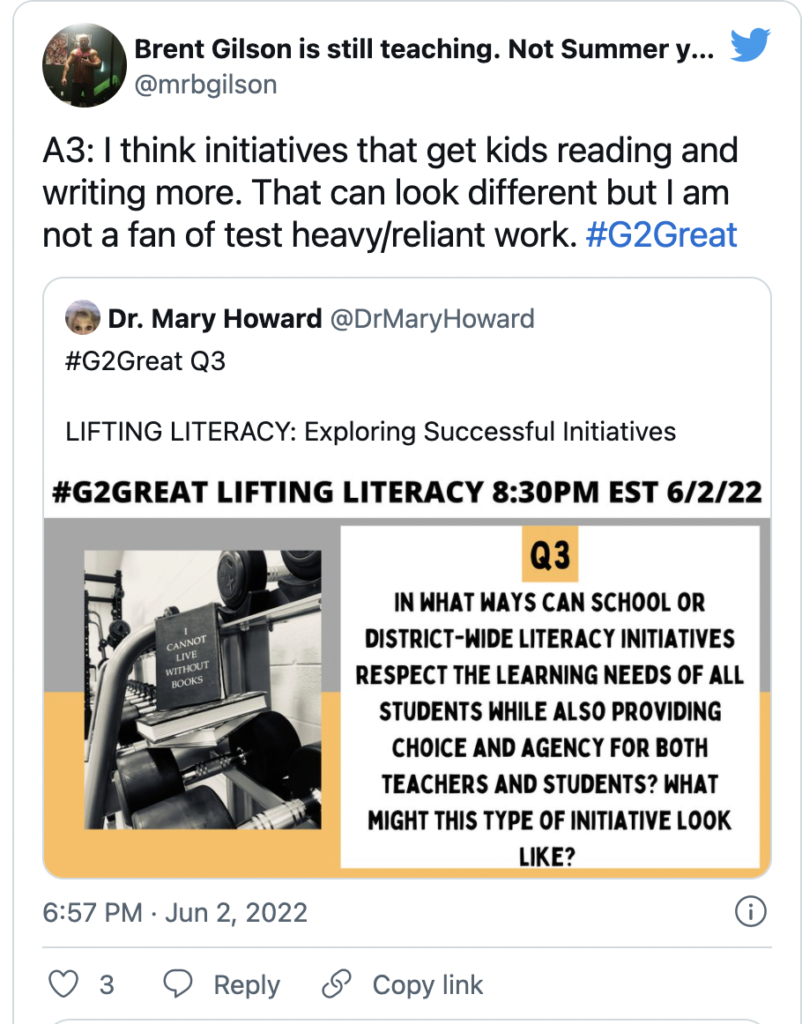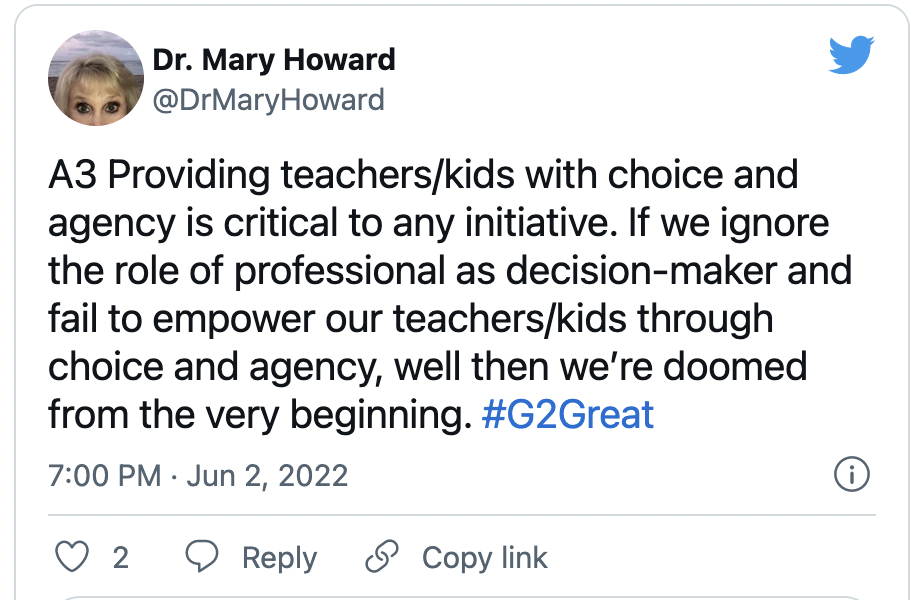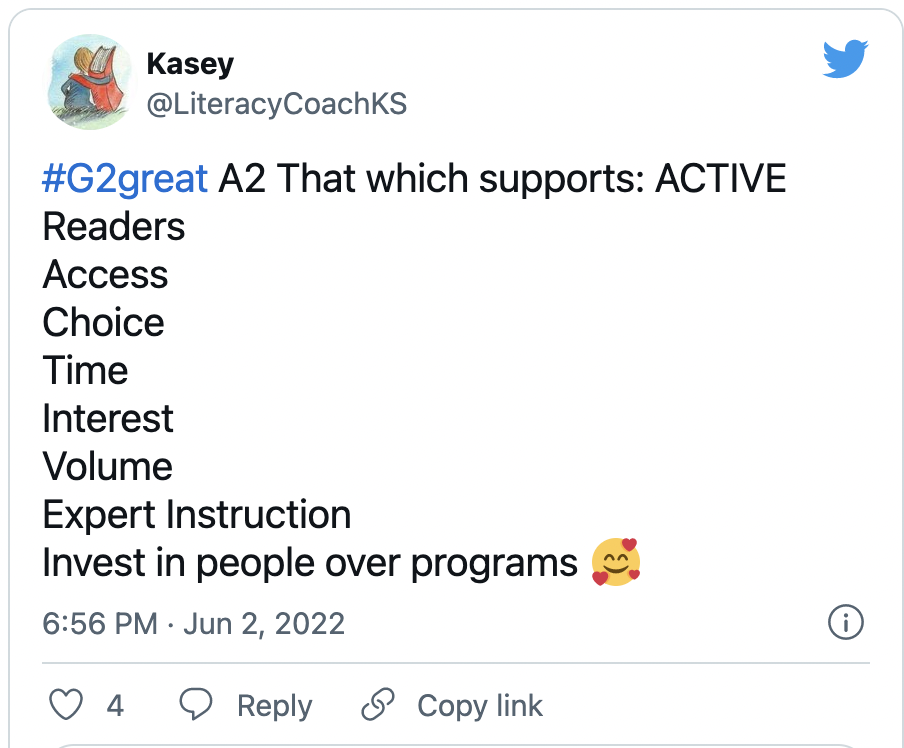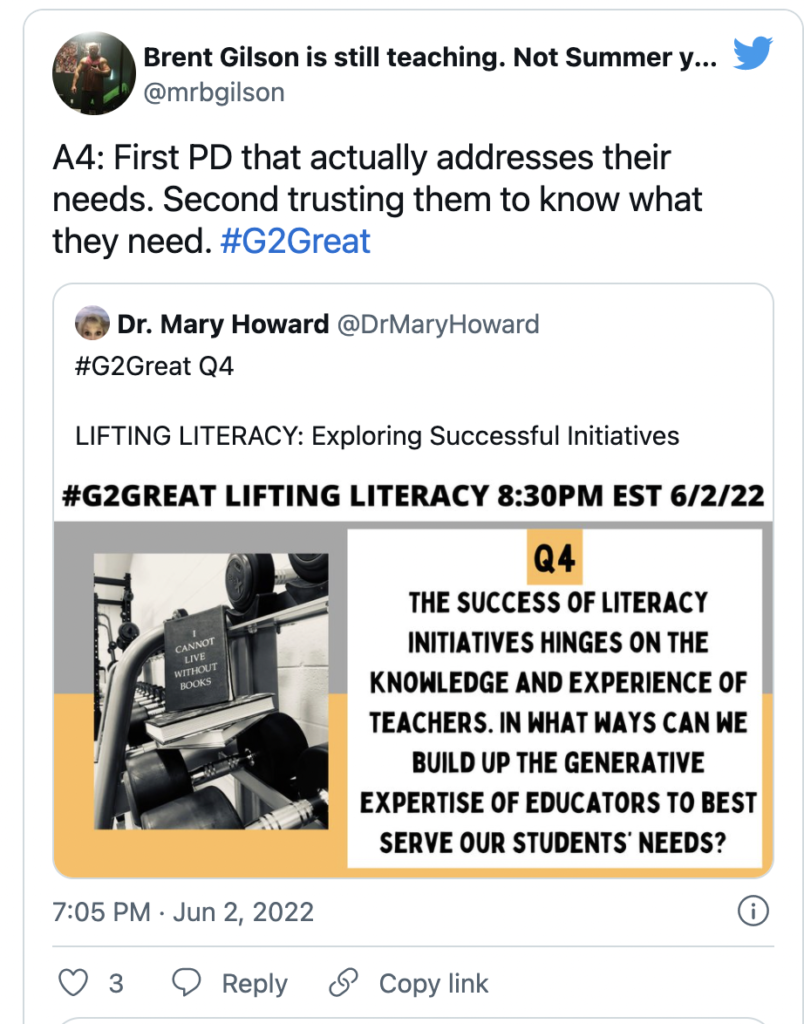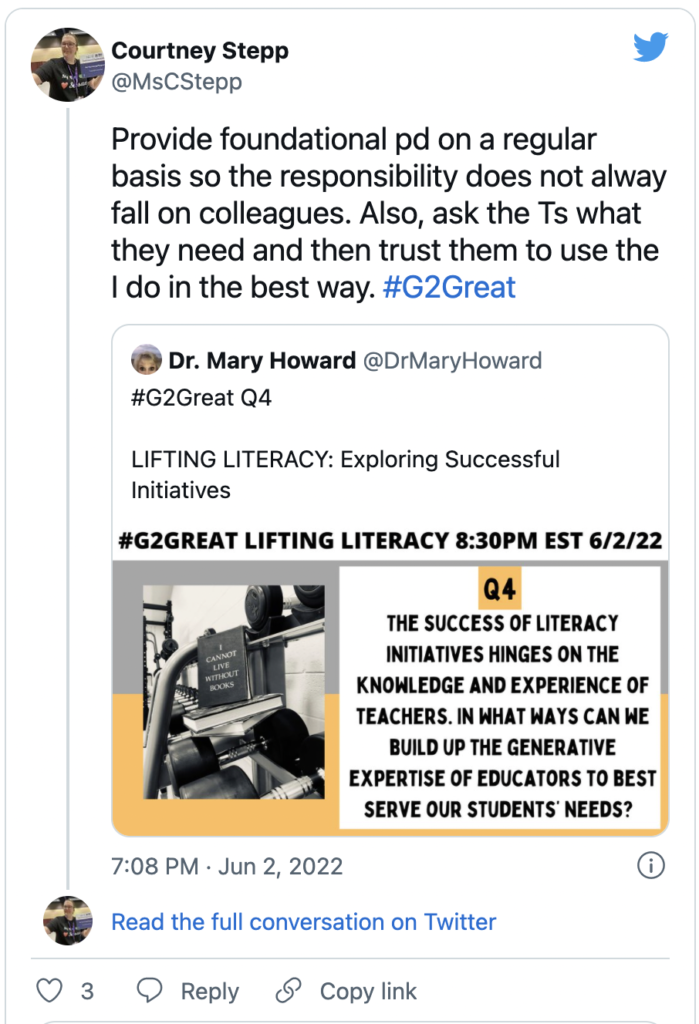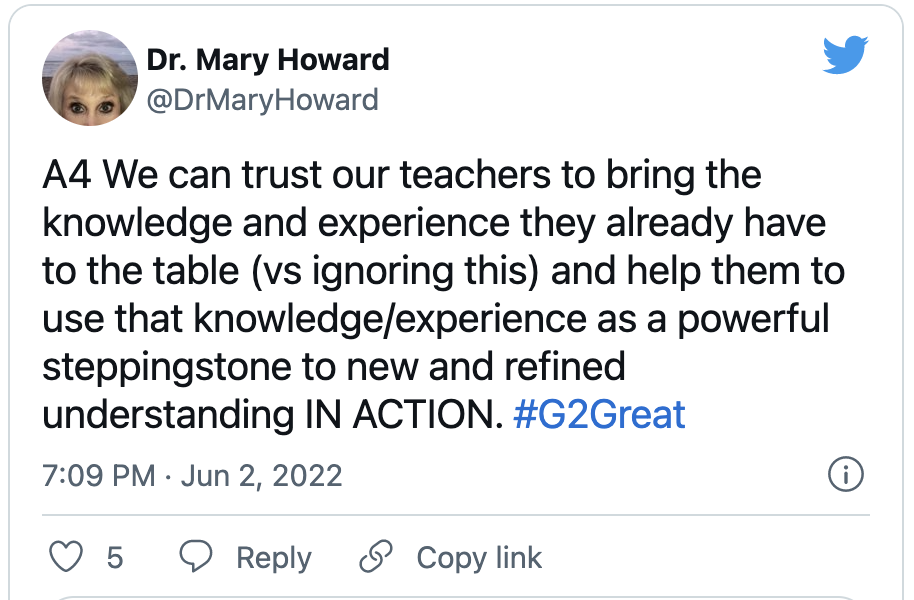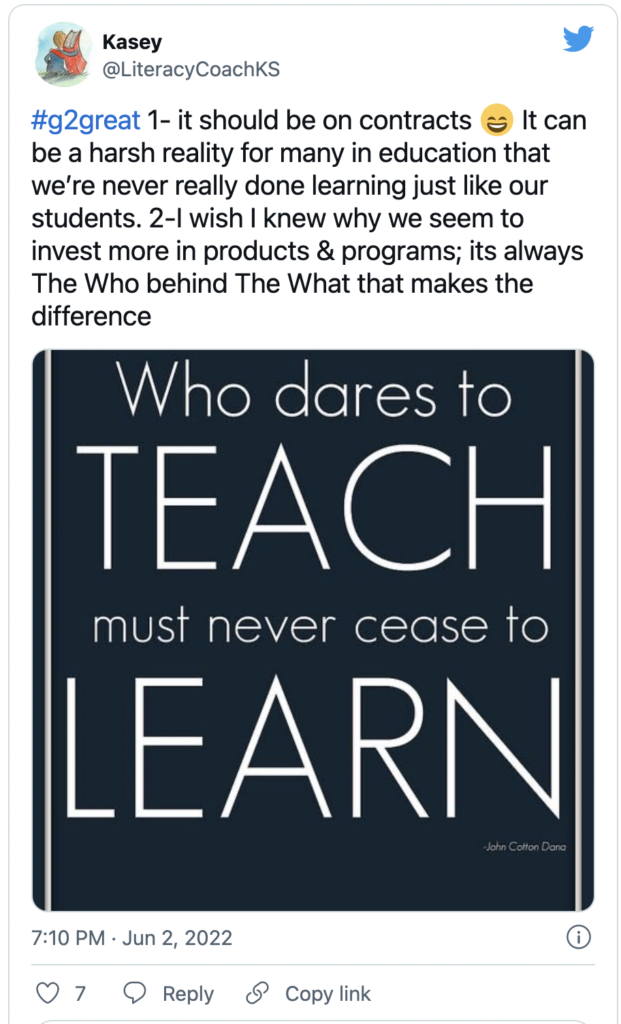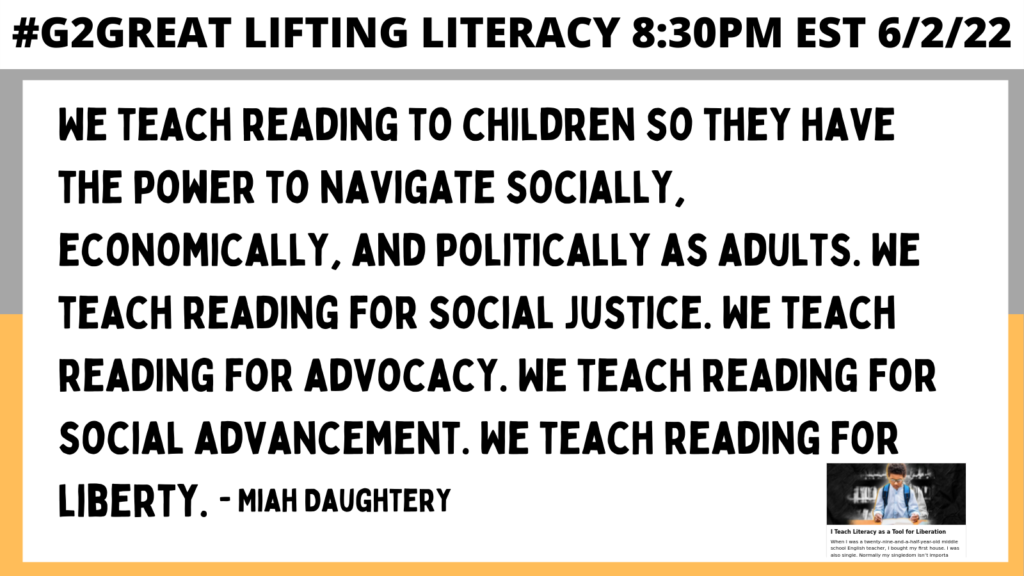By Fran McVeigh
The Twitterverse was full of inspiration (wakelet archive) June 23rd when Dan Feigelson joined the #G2Great chat to discuss his new book, Radical Listening: Reading and Writing Conferences to Reach All Students. Much importance has been attached to conferences for both reading and writing, but yet it’s an area where many teachers feel unprepared and often anxious or even fearful of conferences. Perhaps these emotions come from personal experiences. Maybe they stem from a lack of knowledge. Or perhaps the anxiety is from a combination of a lack of conferences in their own reading and writing lives and in their own confidence of how to conduct and what to say in those conferences with students.
Let’s begin with fear for just a minute.
Fear: “an unpleasant often strong emotion caused by anticipation or awareness of danger” (Merriam Webster online dictionary)
Common fear responses in schools:
- Fight- argue against the importance, minimize the value, close the door and ignore
- Flight – leave the situation whether it’s the classroom, building or district
- Freeze-do only what one knows, often the minimum and hope no one notices
What do you think of when you hear the word conference? What’s your role? Are you the conferee or the person facilitating the conference? Does it matter?
If just hearing the word “conference” makes you fearful, anxious, or antsy, then you need to explore those feelings. Is it a fear of the unknown? A fear of being less than perfect? A fear of just doing/ or being less than your best?
What will reduce that fear? What will make conferences more “doable”?
In Radical Listening Dan proposes that the goal of reading and writing conferences is to help all students reach their full potential. Practical. Doable. Impactful. Equitable. Dan uses active listening as the focus in conferences where we listen to, learn from, and guide students. Conferences will make sense after reading this resource.
Let’s begin with the questions that the #G2Great team asks all authors.
What motivated you to write this book? What impact did you hope that it would have in the professional world?
In a conference I always try to convey that the child’s thinking is just as important as what the grownup has to say. I may be the one teaching a new skill or strategy, but I can’t do it without pinpointing what would be most meaningful for the individual student in front of me. With this in mind, I try to avoid too much paraphrasing, which can come off as correcting, i.e., the way you said it wasn’t clear enough, so I’m going to say it better. It’s a subtle difference, but naming what the child did – “So you are the sort of reader who really pays attention to how the author wants you to feel” – is more empowering than restating and signals listening just as powerfully.
Dan Feigelson email
Tip: The power of naming what the child says because paraphrasing can be seen as “correcting”
What are your BIG takeaways from your book that you hope teachers will embrace in their teaching practices?
My hope is that teachers start to see their literacy instruction as two parallel streams. There’s the stuff you have to cover because you are teaching 2nd grade, or 5th, or 8th; the end-year expectations or standards for that age group. But at the same time, there are the things you’ll teach this year to these kids, who no commercial curriculum writer or education official ever met. Apart from the obvious importance of targeting instruction to the individual learner, this also send the message to kids that they can and should be owners of their own learning, and not feel it is something irrelevant which is being thrust upon them against their will.
Dan Feigelson email
Tip: Two parallel streams with the “have to teach items” and “individual learner streams”
What is a message from the heart you would like for every teacher to keep in mind?
One message, which may feel counter intuitive, is that no matter how far behind a student may be as a reader or writer, it just plain doesn’t work to only ever address their weaknesses. If the subject of your 1:1 teaching interactions is always what the student does least well, she will begin to dread those conversations. We can usually address these things more effectively in partner or group situations, which feel supportive, like we’re-all-in-this-together. Confer to the strength, not the deficit.
The other message, from my heart, is that we should allow ourselves the time and space to be fascinated with the way our students think. It sends a powerful message to them, and just plain makes teaching more fun!
Dan Feigelson email
Tips: 1) Confer to the strength and 2) be fascinated with student thinking
So, why this book? Why this book now?
Democracies of thought when student ideas, noticings, and experiences are honored. What are you honoring with your conferences? What is your intention?
Where do we start? What’s the beginning access point for conferences?
- Relationships – Conferences are a place to build relationships.
Conferences benefit the speaker and the listener with radical listening.
2. Listening for “the general in the specific”
Teach the writer not the piece of writing. Teach the reader not the piece being read. What can be taught that will transfer?
3. Use the reciprocity of reading like a writer and writing like a reader to inform conferences
Colleen Cruz’s books are another touchstone. Check out the post about Writers Read Better here.
4. Encourage children to go deeper in their thinking “in such a way that it sounds like an invitation rather than a criticism”
Close readers may have noticed that part of that last slide was already in this post but it’s important to note that “paraphrasing can come off as correcting.” Pay close attention to the student’s responses to your few conference words.
5. Invite students to be active participants in their learning through conferences
Conferences need to be a partnership between readers or writers and Radical Listening can help provides some tracking ideas so that each student has the opportunity to maximize their own growth.
In conclusion, there’s no ONE way for conferences to go. Take a deep breath. Think about what makes conferences hard. Plan your structure. Explore your options. Prepare. The teaching in conference should build on previous instruction. Conferences are where your students will stretch and grow as long as you remember to reach the reader or writer – not “fixing” the current work or focus of the students. Radical listening is definitely a great resource for student conferences; it’s an even better resource for teacher learning.
Additional Resources
Radical Listening: Reading and Writing Conferences to Reach All Students (2022, School Library Journal)
Radical Listening: Reading and Writing Conference to Reach All Students by Dan Feigelson (2022, Scholastic)
Reading Conferences, Listening, and Identity by Dan Feigelson (2022, Language Magazine) https://www.languagemagazine.com/2022/05/31/reading-conferences-listening-and-identity/
Lessons from the Pandemic: Making Time for Listening by Dan Feigelson (2022, International Schools Services/ISS) https://www.iss.edu/publications/newslinks/april-2022?utm_campaign=Pubs%20-%20NewsLinks&utm_content=208596570&utm_medium=social&utm_source=twitter&hss_channel=tw-202598184#flipbook-april-2022-newslinks/5/
Reading Conferences Reimagined: Student-Driven Conferences to Deepen Critical Thinking by Dan Feigelson (2014, Heinemann) https://www.heinemann.com/products/e05127.aspx
Practical Punctuation: Lessons on Rule Making and Rule Breaking in Elementary Writing by Dan Feigelson (2008, Heinemann) https://www.heinemann.com/products/e00906.aspx
